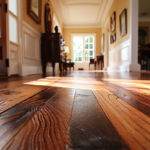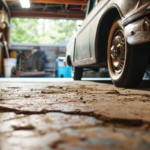In this comprehensive guide, we will explore the step-by-step process of building an outdoor movie projector. With the right materials, tools, and technical know-how, you can create your own entertainment system to enjoy movies under the open sky. From gathering the necessary materials to fine-tuning the projector, this article provides detailed instructions to help you successfully construct your outdoor movie projector. Whether for backyard gatherings or outdoor events, this guide will equip you with the knowledge to bring the big screen experience to the outdoors.
Gathering Materials and Tools
To successfully build an outdoor movie projector, it is essential to gather all the necessary materials and tools, such as a projector, screen, cables, and mounting brackets, in order to ensure a smooth and efficient construction process. When it comes to materials selection, it is important to choose a projector that has the appropriate brightness and resolution for outdoor use. Look for a screen that is durable and weather-resistant to withstand outdoor conditions. Additionally, ensure that you have the right cables to connect the projector to the audio source and power supply. In terms of tool preparation, make sure you have the necessary tools such as a screwdriver, drill, and level to properly mount the projector and screen. It is also a good idea to have extra screws and brackets in case of any unforeseen issues during installation. By gathering all the necessary materials and tools beforehand, you can streamline the construction process and ensure a successful outdoor movie projector build.
Choosing the Right Projector
Selecting a projector with the appropriate brightness and resolution, as well as considering factors such as throw distance and connectivity options, is crucial when choosing the right projector for your outdoor movie setup. When it comes to projector specifications, brightness is a key factor to consider. Outdoor environments tend to have more ambient light, so a projector with high brightness, measured in lumens, is essential to ensure clear and vibrant image quality. Additionally, the projector’s resolution determines the level of detail and sharpness of the projected image. It is recommended to choose a projector with at least 1080p resolution for optimal viewing experience. Another important consideration is the throw distance, which determines how far the projector should be placed from the screen. Lastly, connectivity options like HDMI and wireless capabilities should be evaluated based on your specific needs. Lastly, outdoor projection surfaces should be carefully selected to ensure proper reflection and minimal distortion.
Building the Frame
When it comes to building the frame for your outdoor movie projector, there are several important points to consider. First, you’ll need to choose the right frame material for your specific needs and budget. Then, follow the assembly instructions and tips carefully to ensure a sturdy and well-built frame. Lastly, consider ways to enhance the durability and stability of the frame to withstand outdoor conditions and ensure a seamless movie-watching experience.
Frame Material Options
Aluminum and steel are two durable frame material options commonly used in constructing outdoor movie projectors. When it comes to outdoor projector screen options, there are various choices available, including inflatable screens, fixed-frame screens, and portable screens. Each option has its own advantages and considerations that need to be taken into account.
When discussing projector placement considerations, it is important to factor in the distance between the projector and the screen. The throw distance, which is the distance between the projector and the screen, can vary depending on the type of projector being used. It is also crucial to consider the ambient light conditions in the outdoor environment, as this can affect the image quality and visibility of the projected content.
Overall, selecting the appropriate frame material and considering the outdoor projector screen options and projector placement considerations are crucial steps in building a high-quality outdoor movie projector setup.
Assembly Instructions and Tips
Efficiency is key when following assembly instructions and tips to construct the frame of an outdoor movie projector. Proper assembly techniques are crucial to ensure a sturdy and functional projector frame that can withstand outdoor conditions. To begin, carefully review the instructions provided by the manufacturer. Familiarize yourself with the different parts and their respective functions. Pay attention to any specific tools or hardware required for assembly. During the construction process, it is important to troubleshoot common issues that may arise, such as misaligned pieces or loose connections. Double-check all measurements and ensure that everything is securely fastened. If you encounter any difficulties, consult the troubleshooting section of the instruction manual or contact the manufacturer for assistance. By following assembly instructions and employing effective troubleshooting techniques, you can confidently construct a reliable and durable outdoor movie projector frame.
Enhancing Durability and Stability
In order to achieve a robust and long-lasting frame, it is essential to explore various methods for enhancing durability and stability, such as reinforcing joints and selecting high-quality materials. When considering durability, it is important to take into account the environmental factors that the frame will be exposed to, such as rain, wind, and extreme temperatures. This can help in selecting materials that are resistant to corrosion and deterioration. Additionally, stability techniques should be implemented to prevent any wobbling or movement of the frame during usage. This can be achieved by reinforcing joints with sturdy brackets or using cross bracing to provide additional support. By prioritizing durability considerations and implementing stability techniques, the frame of the outdoor movie projector can withstand the test of time and provide a reliable platform for enjoyable movie nights under the stars.
Attaching the Screen
Securing the screen firmly to the frame is essential for ensuring a stable and immersive viewing experience. When it comes to outdoor movie nights, the screen installation plays a crucial role in creating the perfect ambiance. To attach the screen securely, start by ensuring that the frame is sturdy and level. Use strong clips or hooks to fasten the screen tightly to the frame, making sure there are no wrinkles or sagging. It is important to choose the right type of screen material that is suitable for outdoor use, as it should be weather-resistant and able to withstand wind and other elements. Additionally, consider using bungee cords or ropes to further secure the screen to the frame, providing extra stability during outdoor movie screenings. By taking these measures, you can ensure that your outdoor movie night will be a memorable and enjoyable experience for everyone.
Wiring and Connecting the Projector
To properly set up the outdoor movie projector, it is crucial to carefully wire and connect it to the appropriate power source and audiovisual equipment. Cable management plays a vital role in ensuring a clean and organized setup. Begin by identifying the necessary cables, such as HDMI or VGA, and use cable ties or clips to secure them neatly. It is important to avoid any potential tripping hazards or damage to the cables. Additionally, troubleshooting techniques are essential for a successful setup. If there are any connectivity issues or audiovisual problems, check the connections, power supply, and settings. Troubleshooting may involve adjusting resolution settings, replacing faulty cables, or updating firmware. By following proper cable management and troubleshooting techniques, you can ensure a seamless and enjoyable outdoor movie viewing experience.
Setting Up the Audio System
While setting up the audio system for the outdoor movie projector, it is essential to consider the placement of speakers and the proper calibration of sound levels. Audio troubleshooting and optimizing sound quality are crucial to ensure an immersive viewing experience. When positioning the speakers, it is important to place them at an optimal distance from the audience, ensuring that the sound reaches all viewers evenly. Additionally, the speakers should be positioned to avoid any obstructions that may distort or block the sound. Calibration of sound levels involves adjusting the volume and equalizer settings to achieve a balanced and clear audio output. It is recommended to test the audio system before the movie screening to address any potential issues and make necessary adjustments. By paying attention to these details, one can create a memorable outdoor cinematic experience with exceptional audio quality.
Fine-tuning and Testing the Projector
Ensuring the optimal image quality and color accuracy, fine-tuning and testing the projector involves adjusting the focus, brightness, and contrast settings while also evaluating the alignment and positioning of the projector for the best viewing experience. When it comes to testing techniques, one effective method is to project a test pattern onto the screen to assess the sharpness, color reproduction, and overall image quality. This allows for precise adjustments to be made to achieve the desired result. Additionally, troubleshooting tips can help address common issues such as distorted or blurry images, flickering, or incorrect color representation. These tips may include checking cable connections, cleaning the lens, or updating firmware. By following these testing techniques and troubleshooting tips, users can ensure that their projector delivers the best image quality and viewing experience possible.



